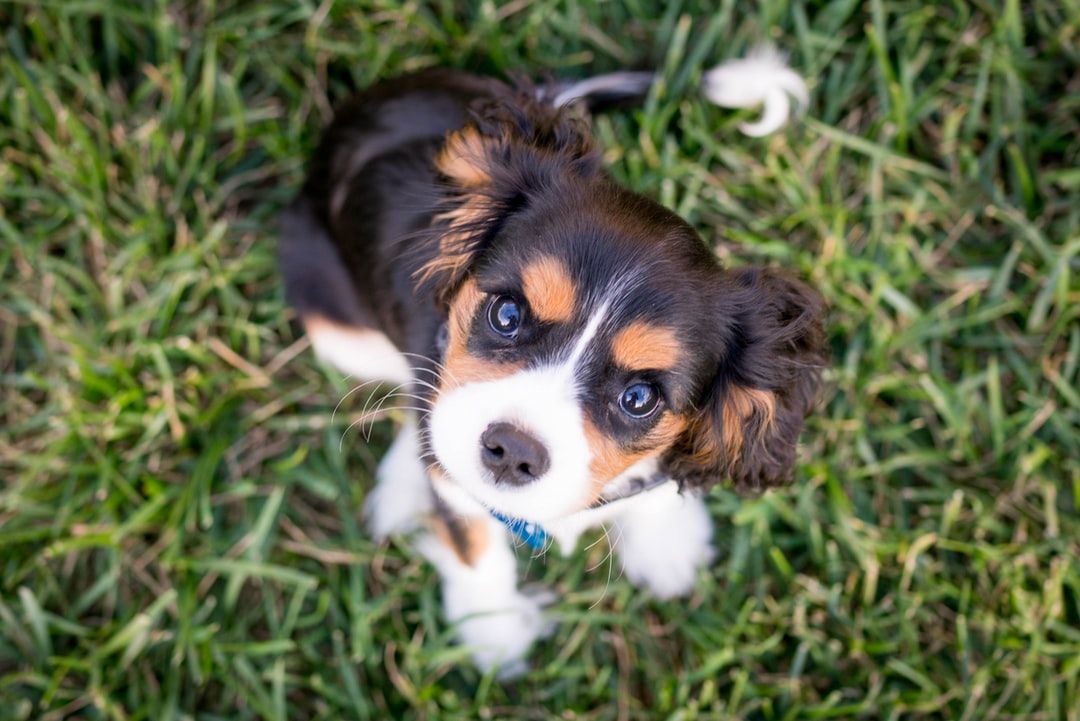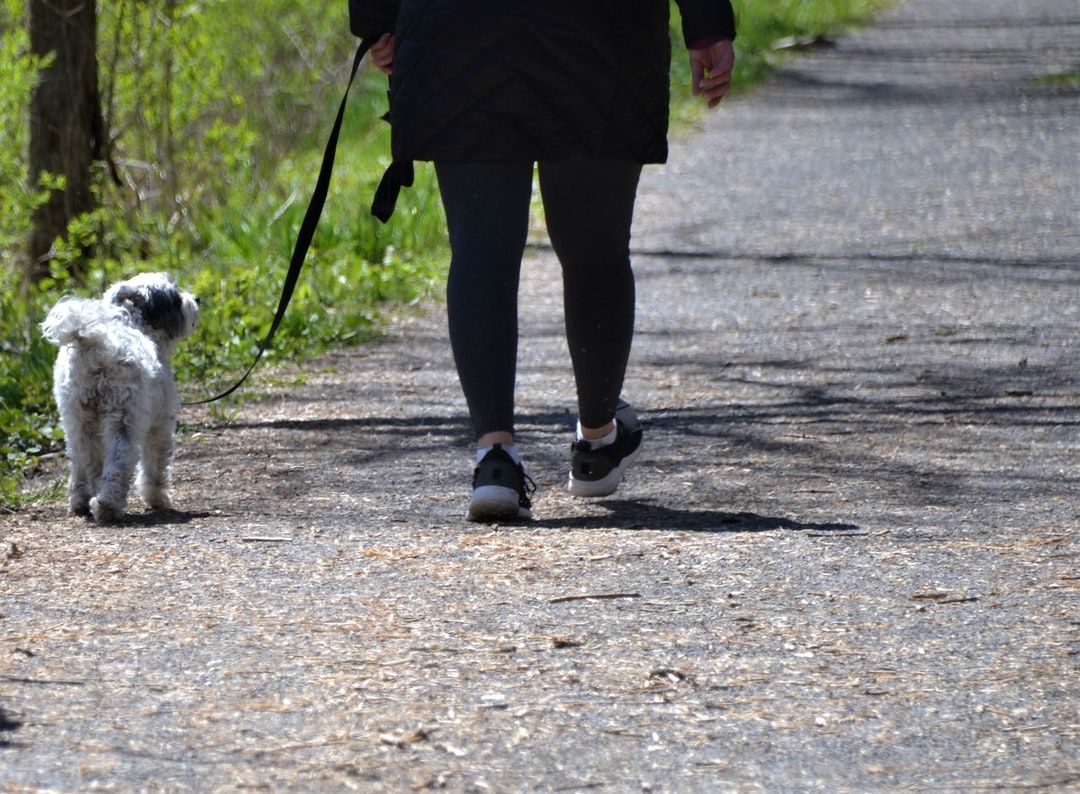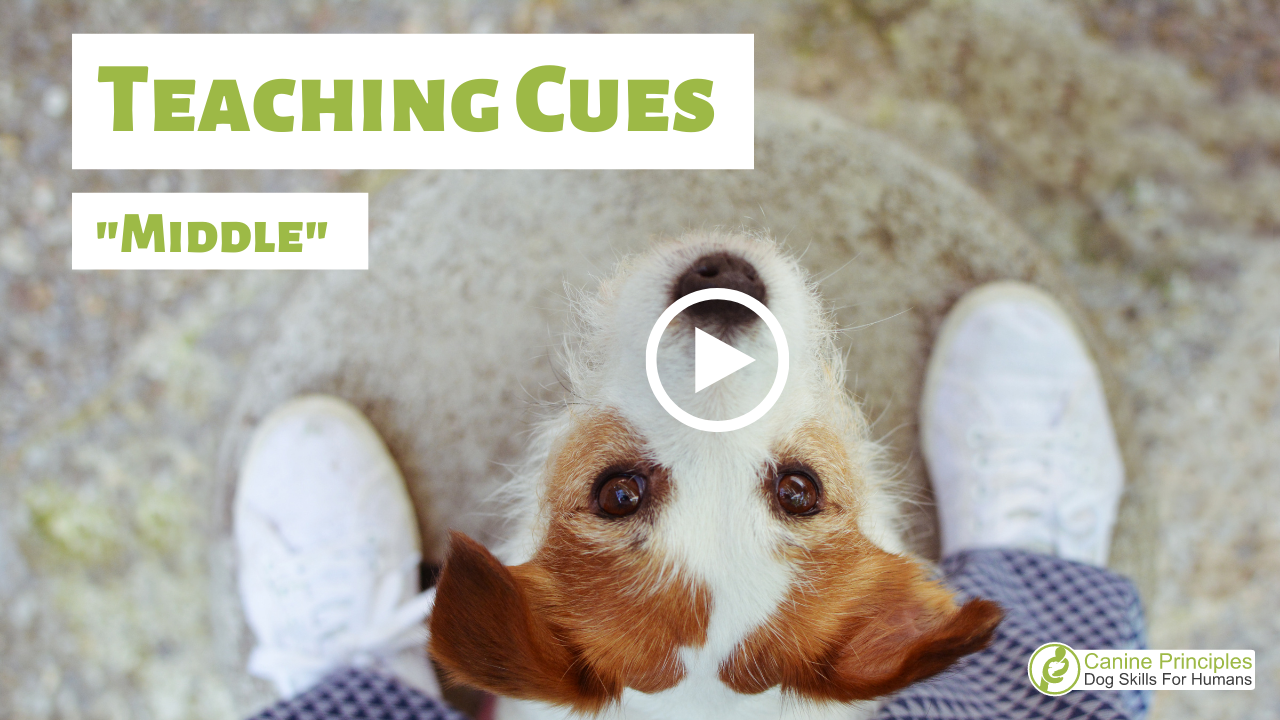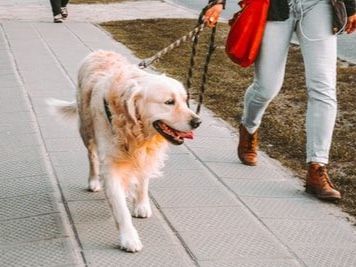Having a reactive dog certainly comes with many challenges. Those with confident dogs have no idea how much time and effort goes into managing your dog’s stresses. Every walk can be a training session, in an effort to keep your dog as calm as possible. Off lead dogs and their oblivious guardians can make your dog walks a minefield, however there are coping strategies that can help you deal with such situations. This blog is going to teach you 3 super helpful cues to teach your reactive dog.
Watch Me

Teaching a “watch me” is an essential skill for any dog, but it is especially beneficial for reactive dogs. This cue teaches your dog to give you eye contact on cue, when you need to suddenly gain their attention. To teach this, take a treat and take it to your dog’s nose and then bring it slowly back to your eye line and say, “watch me”.
When your dog gives you eye contact, praise them and give them the treat. Practice this and build an association with the word until your dog is confident. To make this cue more challenging, start holding the treat out to your side and then saying, “watch me”, in order to phase out the lure and teach your dog to rely on the verbal cue.
When your dog gives you eye contact, praise them and give them the treat. Practice this and build an association with the word until your dog is confident. To make this cue more challenging, start holding the treat out to your side and then saying, “watch me”, in order to phase out the lure and teach your dog to rely on the verbal cue.
Once your dog can do this confidently, you should be able to say, “watch me” and gain your dog’s eye contact without holding a treat.
You can then begin using this cue on walks and around other dogs, however you need to ensure you keep your dog at a safe distance away, to remain under threshold. I recommend using this cue to gain your dog’s attention and then ask them to do something else, such as the cues mentioned below. If you solely relied on your watch me cue, your dog may still react because making them stand still, while there is a dog nearby, can make your dog feel vulnerable and trapped. So it’s a good conversation starter before giving your dog more direction.
You can then begin using this cue on walks and around other dogs, however you need to ensure you keep your dog at a safe distance away, to remain under threshold. I recommend using this cue to gain your dog’s attention and then ask them to do something else, such as the cues mentioned below. If you solely relied on your watch me cue, your dog may still react because making them stand still, while there is a dog nearby, can make your dog feel vulnerable and trapped. So it’s a good conversation starter before giving your dog more direction.
Middle
Teaching a “middle” is a really helpful and fun coping strategy to use on walks. This cue directs your dog to a middle position under your legs and you can then move your dog, whilst keeping them in that position.
To teach this, you will need to stand with your feet apart and have a treat in each hand. Show your dog the treat in your right hand, and slowly lure your dog around to the back of your legs.
Once your dog is there, show your dog the treat in your left hand through the front of your legs, in order to lure your dog to stand under you. When your dog gets in the position you can say, “middle” and treat your dog.
You Can See This Cue Taught On Our You Tube Channel Here
To teach this, you will need to stand with your feet apart and have a treat in each hand. Show your dog the treat in your right hand, and slowly lure your dog around to the back of your legs.
Once your dog is there, show your dog the treat in your left hand through the front of your legs, in order to lure your dog to stand under you. When your dog gets in the position you can say, “middle” and treat your dog.
You Can See This Cue Taught On Our You Tube Channel Here
Practice this in regular short sessions until it becomes smoother.
Once your dog is confident with middle and understands the word, you can start moving a step forward while your dog is in the middle position. To do this, take a small step forward, while regularly feeding your dog.
As you practice, you can gradually increase the steps and start turning your dog around to face a different direction by just moving your feet and continuing to feed your dog in the middle position. If you turn this cue into a game, your dog will be excited to play and this makes it an excellent coping strategy for getting and maintaining your dog’s attention on you, whilst also using your body as a safe place and a means to change your dog’s direction.
Once your dog is confident with middle and understands the word, you can start moving a step forward while your dog is in the middle position. To do this, take a small step forward, while regularly feeding your dog.
As you practice, you can gradually increase the steps and start turning your dog around to face a different direction by just moving your feet and continuing to feed your dog in the middle position. If you turn this cue into a game, your dog will be excited to play and this makes it an excellent coping strategy for getting and maintaining your dog’s attention on you, whilst also using your body as a safe place and a means to change your dog’s direction.
This Way

Teaching a “this way” cue can be a game changer and a great one to use in an emergency. This cue is used to direct your dog to take an emergency U turn away from a trigger.
To teach this, you want to practice somewhere quiet and safely away from other dogs, like your garden or a secure field. With treats handy, start walking your dog forward and then say, “this way” and turn away from your dog, showing your dog a treat to lead them around with you in a U-turn.
You will need to practice this for a few sessions, in order for your dog to learn the meaning of the word.
When your dog has become confident with this cue, start using it on walks and practice at a safe distance from other dogs, so your dog stays calm and under threshold. Remember to use a cheerful tone of voice to keep your dog calm and motivated to follow you. This cue is an excellent way to quickly increase the distance between your dog and a trigger and help avoid a stressful experience.
To teach this, you want to practice somewhere quiet and safely away from other dogs, like your garden or a secure field. With treats handy, start walking your dog forward and then say, “this way” and turn away from your dog, showing your dog a treat to lead them around with you in a U-turn.
You will need to practice this for a few sessions, in order for your dog to learn the meaning of the word.
When your dog has become confident with this cue, start using it on walks and practice at a safe distance from other dogs, so your dog stays calm and under threshold. Remember to use a cheerful tone of voice to keep your dog calm and motivated to follow you. This cue is an excellent way to quickly increase the distance between your dog and a trigger and help avoid a stressful experience.
The key to every cue, is ensuring you use them regularly and not just when there is a dog nearby. If you only use them in an emergency, your cue can become poisoned. This means your dog will learn the cue is a predictor of another dog and they will become anxious before they even see a dog.
So practice these cues regularly, even when a dog is not nearby. From personal experience, I find that the cues that require your dog to give you attention and move away are the most effective, especially if a dog is nearby. By changing direction and moving away, you are giving your dog more choices, which will empower them and build their resilience.
So practice these cues regularly, even when a dog is not nearby. From personal experience, I find that the cues that require your dog to give you attention and move away are the most effective, especially if a dog is nearby. By changing direction and moving away, you are giving your dog more choices, which will empower them and build their resilience.
Building your dog’s resilience is the key to helping them feel safe in a scary world and these cues can help you to accomplish this. I am sure you have already fought many battles for your reactive dog and you probably have many more ahead, however, the love of your dog is certainly worth the endeavour.
Start Your FREE Skill-Hub Trial Today
Commitment Free 3 Day Access
Canine Principles' Skill-Hub allows unlimited* access to ALL self-study courses, workshops & webinars.
*Requires Monthly Subscription. See Skill-Hub Subscription Page For Details.


